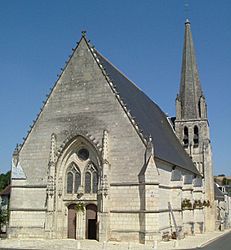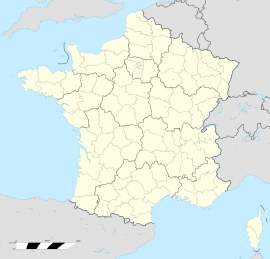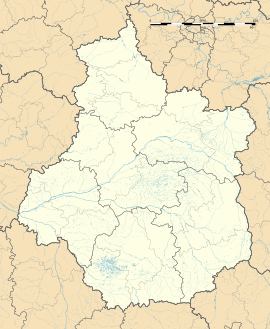Lunay facts for kids
Quick facts for kids
Lunay
|
||
|---|---|---|

Church of Saint-Martin
|
||
|
||
| Country | France | |
| Region | Centre-Val de Loire | |
| Department | Loir-et-Cher | |
| Arrondissement | Vendôme | |
| Canton | Montoire-sur-le-Loir | |
| Intercommunality | CA Territoires Vendômois | |
| Area
1
|
38.63 km2 (14.92 sq mi) | |
| Population
(Jan. 2019)
|
1,253 | |
| • Density | 32.436/km2 (84.01/sq mi) | |
| Time zone | UTC+01:00 (CET) | |
| • Summer (DST) | UTC+02:00 (CEST) | |
| INSEE/Postal code |
41120 /41360
|
|
| Elevation | 66–156 m (217–512 ft) (avg. 69 m or 226 ft) |
|
| 1 French Land Register data, which excludes lakes, ponds, glaciers > 1 km2 (0.386 sq mi or 247 acres) and river estuaries. | ||
Lunay is a small town, also called a commune, located in central France. It is part of the Loir-et-Cher department. In 2019, about 1,253 people lived there.
Where is Lunay?
Lunay is found in the northwest part of its department. It is about 15 kilometers (9 miles) west of the city of Vendôme. The famous city of Paris is about 180 kilometers (112 miles) southwest of Lunay.
The Loir River flows along the east and south sides of the town. This river runs for about 8 kilometers (5 miles) near Lunay.
Neighboring Towns
Lunay shares its borders with several other towns. These include Thoré-la-Rochette, Mazangé, and Fortan. Other nearby communes are Savigny-sur-Braye, Fontaine-les-Coteaux, Montoire-sur-le-Loir, Les Roches-l'Évêque, and Saint-Rimay.
How Many People Live in Lunay?
The number of people living in Lunay has changed over many years. This is called the population. Here's how the population has looked at different times:
| Historical population | ||
|---|---|---|
| Year | Pop. | ±% |
| 1831 | 1,596 | — |
| 1901 | 1,569 | −1.7% |
| 1954 | 1,142 | −27.2% |
| 1962 | 937 | −18.0% |
| 1968 | 1,011 | +7.9% |
| 1975 | 1,007 | −0.4% |
| 1982 | 1,207 | +19.9% |
| 1990 | 1,213 | +0.5% |
| 1999 | 1,293 | +6.6% |
| 2008 | 1,344 | +3.9% |
| 2913 | 1,274 | −5.2% |
As you can see, the population has gone up and down. For example, in 1831, there were almost 1,600 people. By 1962, the number had dropped to under 1,000. Since then, it has slowly grown again.




